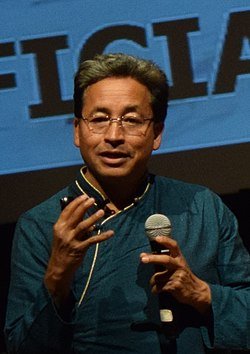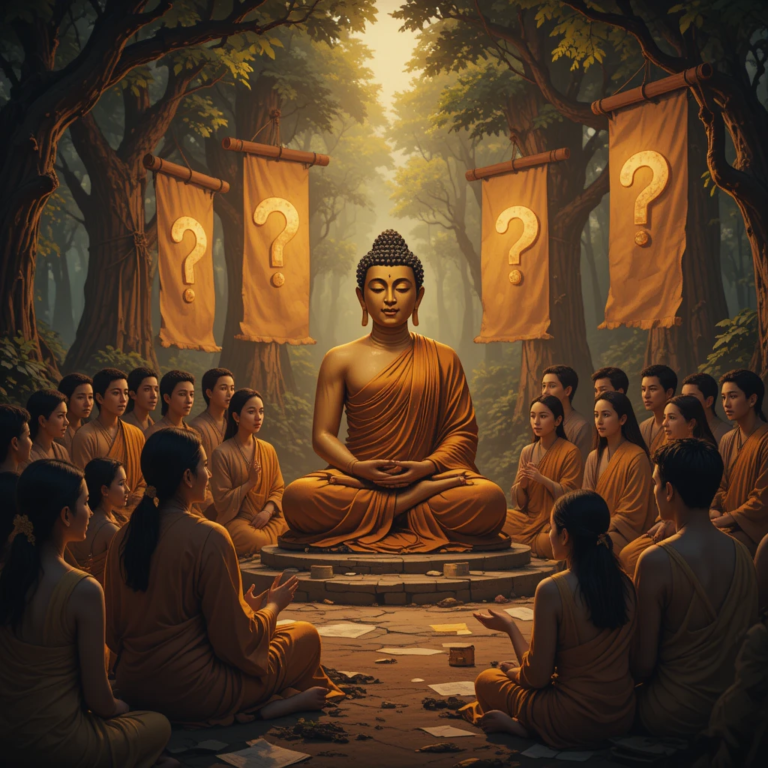The Tharu tribe, one of India’s indigenous communities, thrives in the lush Terai region of Uttarakhand, Uttar Pradesh, Bihar, and southern Nepal. In Uttarakhand, they are predominantly found in districts like Udham Singh Nagar, Nainital, and Khatima, with smaller populations in the Kumaon and Garhwal regions. Recognized as a Scheduled Tribe by the Government of India, the Tharu are known for their deep-rooted connection to nature, vibrant cultural heritage, and a complex history of origins. This article delves into the Tharu’s origins, their rich cultural practices, their colorful festivals, and their claimed ancestral ties to Rajasthan, offering a comprehensive portrait of this resilient community.

Table of Contents
Origins of the Tharu Tribe
The Tharu’s origins are a tapestry of myths, oral traditions, and scholarly hypotheses, with no single theory fully encapsulating their history. Their presence in the Terai dates back at least to the 10th century, as noted by the scholar Alberuni in his Tahqiq-i-Hind. Below are the primary theories about their origins:
1. Theravada Buddhism Connection
The term “Tharu” is believed to derive from sthavir, a Pali word meaning a follower of Theravada Buddhism. Some Tharu communities, particularly in central Nepal, claim descent from Gautama Buddha or the Shakya dynasty, which propagated Mahayana Buddhism in Nepal from the late 1st century BC to the early 1st century AD. This theory is bolstered by their animistic practices and cultural elements that echo Buddhist traditions, such as reverence for natural elements and community-oriented rituals.
2. Rana Tharu and Rajput Ancestry

The Rana Tharu, a prominent subgroup in western Nepal and Uttarakhand’s Udham Singh Nagar, assert a Rajput ancestry from Rajasthan’s Thar Desert. According to their oral traditions, after the defeat of Maharana Pratap by Mughal forces in the 16th century, Rajput women and their attendants fled to the Terai’s forests for safety. Unable to return, they married local men, giving rise to the Tharu lineage. This narrative establishes a historical link to Rajasthan, particularly among the Rana Tharu, though some scholars question its validity due to limited genetic corroboration.
3. Tibetan and Indigenous Roots
Another hypothesis suggests the name “Tharu” originates from the Tibetan phrase mtha’-ru’i brgyud, meaning “people of the border country,” as recorded by the 16th-century scholar Taranatha in his History of Buddhism in India. This points to their long-standing presence in the Terai’s borderlands. Genetic studies reveal a mix of South Asian (Haplogroup H, R1a) and East Asian (Haplogroup O-M117) markers, indicating a blend of indigenous Terai populations and migrations from neighboring regions, possibly including Mongoloid groups.
4. Indigenous to the Terai
Many Tharu communities assert they are the original inhabitants of the Terai, a claim supported by their genetic resistance to malaria, which enabled them to thrive in the region’s swampy, malaria-prone environment until eradication programs in the 1960s allowed non-Tharu settlers to move in. Their adaptation to the Terai’s unique ecology, including knowledge of its flora and fauna, underscores their deep-rooted presence.
5. Shakya Dynasty Hypothesis
Some scholars propose a connection to the Shakya dynasty, linked to the spread of Mahayana Buddhism. This aligns with the Tharu’s Buddhist cultural elements, such as their reverence for natural deities, but lacks conclusive historical evidence.
Presence in Uttarakhand
In Uttarakhand, the Tharu are primarily concentrated in the Terai, with a population of 89,399 in Udham Singh Nagar as per the 2011 Census, making them the state’s largest tribal group. The Rana Tharu subgroup is significant in this region, reinforcing the Rajasthan connection, while other subgroups like Buksa Tharu also have a presence. Their numbers are smaller in the hilly Kumaon and Garhwal regions, where tribes like Bhotias and Jaunsaris dominate.
Culture of the Tharu Tribe
The Tharu’s culture is a vibrant reflection of their symbiotic relationship with the Terai’s forests, blending indigenous, Hindu, Buddhist, and animistic influences. Their traditions, language, and practices highlight their unique identity.
Language
The Tharu speak various dialects of the Tharu language, known as Tharuhati, which belongs to the Indo-Aryan subgroup of the Indo-European family. In Uttarakhand, dialects like Rana Tharu and Buksa Tharu are prevalent, showing lexical similarities with Awadhi, Hindi, and Nepali. In central Nepal, their dialects are influenced by Bhojpuri, while eastern Nepal sees Maithili variants. The Rana Tharu language is recognized for mother-tongue education up to grade three in Nepal’s Kanchanpur district, preserving their linguistic heritage.
Social Structure
Tharu society is patriarchal but grants women stronger property rights than many mainstream North Indian Hindu communities, reflecting matrilineal influences. They live in extended joint families, often in longhouses, and maintain community cohesion through village councils (panchayats) led by a Padhana. The Bharra, a traditional healer, treats ailments using herbal remedies, embodying their deep knowledge of the forest.

Marriage practices include arranged marriages, often fixed in childhood, with elaborate multi-day ceremonies. Polygamy is customary among wealthier Tharu, and the Rana Tharu in Bardiya, Nepal, practice bride exchange, where a daughter’s marriage is exchanged for a bride for a son. These practices underscore their distinct social norms.
Livelihood
Agriculture is the cornerstone of Tharu society, with crops like rice, wheat, maize, mustard, lentils, and vegetables cultivated using traditional methods. They also engage in animal husbandry (cows, buffaloes, goats, pigs, chickens), fishing, and gathering forest produce. Their ethnobotanical knowledge is extensive, with plants like Dysoxylum binectariferum (Achalkaat) used to treat ailments such as osteomyelitis, abscesses, and even cancer, showcasing their reliance on natural resources.
Housing
Tharu villages feature distinctive thatched-roof houses made of mud, bamboo, and grass, designed to withstand the Terai’s humid and rainy climate. These homes often have colorful, traditionally designed verandahs, reflecting their artistic heritage and connection to the environment.
Cuisine
Tharu cuisine is tied to their agricultural and forest-based lifestyle, featuring dishes like:
- Bagiya or Dhikri: Steamed rice flour dishes served with chutney or curry.
- Ghonghi: A curry made from edible snails with spices like coriander, chili, garlic, and onion.
- Fish, pork, and rice are dietary staples, accompanied by Jad, a local alcohol made from barley and herbs.
Their non-vegetarian preferences, including occasional beef consumption, set them apart from mainstream Hindu practices, highlighting their unique cultural identity.
Art and Craft
Tharu women are skilled in embroidery, weaving, beadwork, pottery, and basket weaving. Their handicrafts, recognized under Uttar Pradesh’s “One District, One Product” scheme, are popular among tourists visiting areas like Dudhwa Tiger Reserve. Traditional paintings and designs often depict nature, reflecting their eco-friendly ethos and artistic talent.
Religion and Beliefs
The Tharu practice a syncretic blend of Theravada Buddhism, Hinduism, and animism. They worship deities associated with natural elements, such as the forest goddess Bandevi, Lord Shiva as Mahadev, and Narayan, their supreme being believed to provide sunshine, rain, and harvests. Rituals involve traditional specialists alongside Hindu Brahman priests, with plants playing a significant role in ceremonies, underscoring their animistic beliefs.
Festivals of the Tharu Tribe
The Tharu celebrate a variety of festivals with enthusiasm, blending indigenous traditions with Hindu and Buddhist influences. These events are marked by music, dance, feasting, and community participation.
1. Maghi (Makar Sankranti)
Celebrated as the Tharu New Year, Maghi marks the harvest season and the onset of auspicious activities. It features traditional music, dance, and the preparation of special dishes like Bagiya. In Uttarakhand, it is a major event, bringing communities together to celebrate their agricultural roots.
2. Jitiya
Observed by Tharu women, Jitiya involves fasting and prayers for the well-being of their children. The festival includes rituals and community participation, strengthening social bonds and highlighting the importance of family.
3. Holi

The Tharu celebrate Holi over several days with vibrant folk dances performed in traditional attire. Men and women participate in energetic performances, showcasing their cultural heritage and community spirit.
4. Diwali
Like other Indian communities, the Tharu celebrate Diwali with fervor, incorporating unique customs such as decorating homes with traditional designs. The festival blends their indigenous practices with Hindu traditions.
5. Krishna Janmashtami and Charai
Krishna Janmashtami is celebrated with devotion, followed by Charai on the Sunday 16 days later. Charai involves worshipping household deities and preparing Sakhari (prasad), reflecting their integration of Hindu rituals with local customs.
6. Tharu Stick Dance
Performed during festivals like Dashain, the Stick Dance is a rhythmic performance using sticks, a major cultural attraction in Uttarakhand and Nepal’s Chitwan. It symbolizes unity and is a highlight of Tharu cultural shows.
Relation with Rajasthan
The Tharu’s connection to Rajasthan is primarily through the Rana Tharu subgroup, who claim a Rajput ancestry, adding a layer of intrigue to their origins.
Historical Migration Claim
The Rana Tharu assert that their ancestors were Rajputs from Rajasthan’s Thar Desert who fled to the Terai after Maharana Pratap’s defeat in the 16th century. According to legend, Rajput women, accompanied by their servants, settled in the forested Terai, marrying locally and forming the Tharu lineage. This narrative establishes a cultural and ancestral link to Rajasthan’s warrior caste, particularly among the Rana Tharu in Uttarakhand and western Nepal.
Cultural Traces
The Rana Tharu’s clan-based social structure and pride in their warrior ancestry reflect Rajput influences. However, their Mongoloid facial features and distinct cultural practices, such as animism and matrilineal elements, suggest a blending with indigenous Terai populations. Unlike Rajasthan’s predominantly Hindu Rajputs, the Tharu incorporate Theravada Buddhism and animistic beliefs, indicating a divergence over centuries.
Scholarly Skepticism
Some scholars argue that the Rajasthan connection may be a constructed narrative to elevate social status, given the prestige of Rajput ancestry in North India. Genetic studies showing a mix of East Asian and South Asian markers suggest a more complex origin, possibly involving indigenous Terai groups and later migrations. The Tharu’s adaptation to the malarial Terai, unlike the arid Thar Desert, further questions a direct Rajasthan link, pointing to a longer indigenous presence.
Current Recognition
In Uttarakhand, the Rana Tharu are the largest tribal group, with a population of 256,129 in 2001, accounting for 33.4% of the state’s Scheduled Tribes. In 2020, Nepal recognized the Rana Tharu as a distinct ethnic group, separate from other Tharu subgroups, affirming their unique identity. While the Rajasthan connection remains a significant part of their oral history, it is one of several theories about their origins.
Challenges and Modern Developments
Impact of Globalization and Industrialization
In Uttarakhand, industrial development, particularly the establishment of the State Infrastructure and Industrial Development Corporation of Uttarakhand (SIIDCUL) post-2000, has led to land acquisition, threatening the Tharu’s nature-centric lifestyle. Migration from hilly areas, referred to as Khasiya or Pahadis by the Tharu, has further strained their resources, risking the erosion of their weaving culture and traditional practices.
Government Initiatives
The Uttar Pradesh government has launched a homestay scheme in districts like Balrampur, Bahraich, Lakhimpur, and Pilibhit, extended to Uttarakhand, to promote Tharu culture and provide economic opportunities. Tourists can experience Tharu villages, cuisine, and crafts, boosting local economies. Additionally, Tharu handicrafts are promoted under Uttar Pradesh’s “One District, One Product” scheme, enhancing their visibility and market reach.
Historical Marginalization
Historically, the Tharu faced exploitation as bonded laborers under Nepal’s Kamaiya system and were classified as a “touchable enslavable” group under the 1854 Muluki Ain code. Malaria eradication in the 1960s led to an influx of non-Tharu settlers, further marginalizing them by reducing their control over ancestral lands.
Conclusion
The Tharu tribe of Uttarakhand’s Terai, with smaller populations in Kumaon and Garhwal, embodies a rich cultural heritage shaped by their forested environment. Their origins are a complex blend of indigenous Terai roots, Theravada Buddhism, and a claimed Rajput ancestry from Rajasthan, particularly among the Rana Tharu. Their culture, marked by agriculture, distinctive cuisine, animistic beliefs, and vibrant festivals like Maghi and Jitiya, reflects a unique synthesis of influences. The Rajasthan connection, while significant in their oral history, remains debated due to genetic and cultural complexities. Despite challenges from industrialization and historical marginalization, government initiatives like homestays and handicraft promotion are helping preserve their heritage. The Tharu’s story is one of resilience, cultural richness, and an enduring bond with nature, making them a vital part of India’s diverse tribal landscape.
References
- Alberuni. (1030). Tahqiq-i-Hind (Translated by Edward C. Sachau, 1888). Trubner & Co.
- Chaubey, G., et al. (2014). “Unravelling the Distinct Strains of Tharu Ancestry.” European Journal of Human Genetics, 22(12), 1404–1412.
- Government of India. (2011). Census of India 2011: Scheduled Tribes in Uttarakhand. Ministry of Home Affairs.
- Guneratne, A. (2002). Many Tongues, One People: The Making of Tharu Identity in Nepal. Cornell University Press.
- Krauskopff, G. (2003). “An ‘Indigenous Minority’ in a Border Area: Tharu Ethnic Associations, NGOs, and the Nepalese State.” In Resistance and the State: Nepalese Experiences (pp. 199–224). Berghahn Books.
- Nepal Government. (2020). Ethnic Group Recognition Act: Rana Tharu. Ministry of Culture, Tourism, and Civil Aviation.
- Sharma, R. K. (2018). “Ethnobotanical Studies of Tharu Tribe in Uttar Pradesh and Uttarakhand.” Journal of Ethnopharmacology, 225, 112–120.
- Skar, H. O. (1995). “The Tharu of Chitwan: Ethnicity, Class, and the State in Nepal.” Journal of Asian Studies, 54(2), 423–440.
- Taranatha. (16th century). History of Buddhism in India. Translated by Lama Chimpa & Alaka Chattopadhyaya (1970). Motilal Banarsidass.
- Uttar Pradesh Tourism. (2023). “Tharu Homestay Scheme.” Retrieved from http://uptourism.gov.in.




